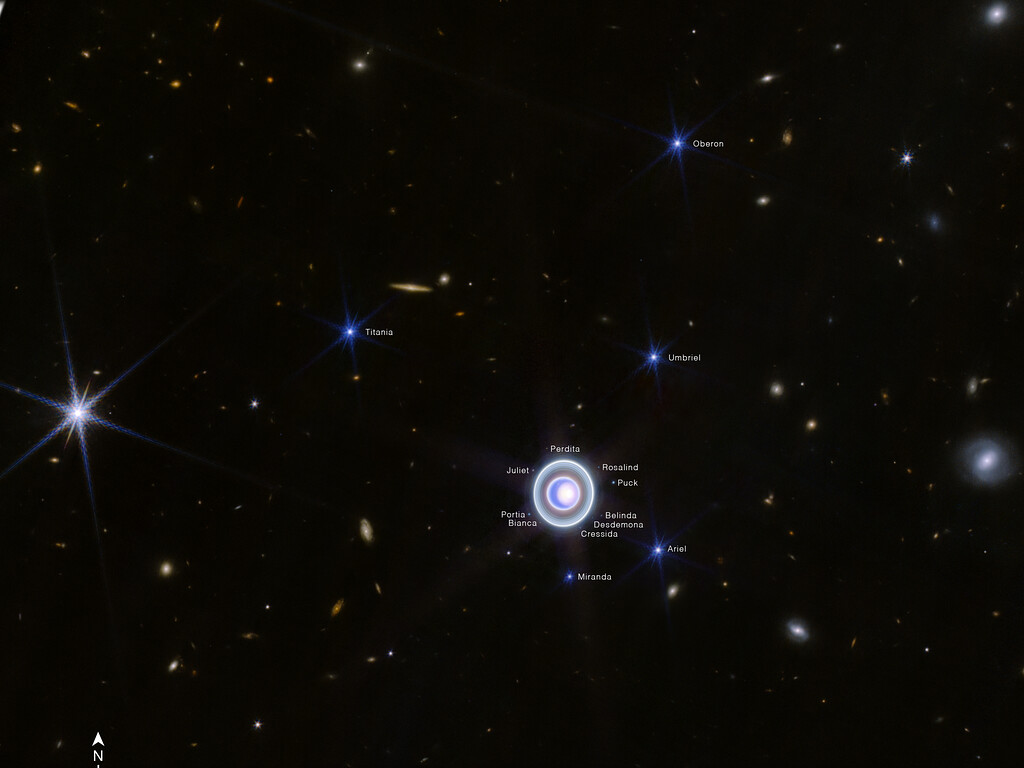JWST’s gift to us all this holiday season: an even better view of Uranus. Following a spectacular image taken earlier this year, the space telescope has been taking many observations of the distant ice giant planet. A new image released to mark the winter holidays reveals many previously unseen details.
JWST has snapped details of the dim inner and outer rings of Uranus, including the elusive Zeta ring. This is the extremely faint and diffuse ring closest to the planet. In the wide field view, the image shows at least 14 moons, more than half of the planet’s 27 known natural satellites. In the close-up version, you can see that some of the moons are within the rings.
If moons and rings were not spectacular enough for your liking, how about some atmospheric features? In visible light, Uranus is fairly featureless. The observations from Voyager 2 in the 1980s show it as a smooth aquamarine-colored sphere. In infrared light, things are different. There are storms visible as bright dots on Uranus. You can also see the full polar cap.

Uranus, its rings, and many of its moons, as captured by JWST.
Image Credit: NASA, ESA, CSA, STScI
The reason why we can see the whole pole is that Uranus orbits on its side. Its axis has a whopping 98-degree tilt compared to its orbit. This is believed to have been caused by a colossal collision billions of years ago. Uranus is approaching its solstice in 2028, and then the axis will be pointing right at the Sun. The seasonal effects create the white dome seen in this photo, and JWST observations will help disentangle these effects from different meteorological phenomena.
Uranus has complexities not seen on other planets so the work carried out by planetary scientists with the help of JWST will be fundamental in building a more accurate picture of what goes on inside this fascinating world.
Source Link: A Shiny Uranus Is JWST's Holiday Gift For Us All